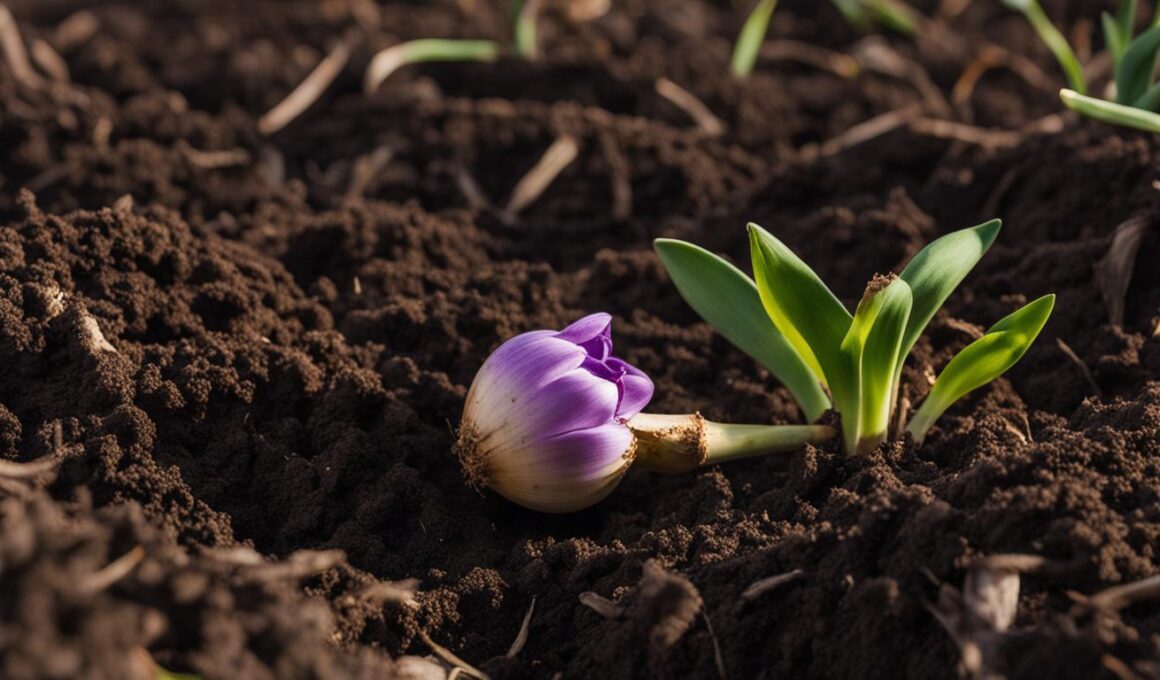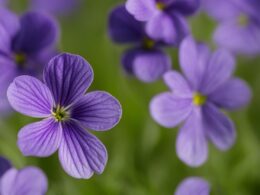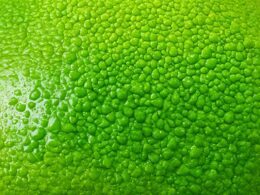After enjoying the beautiful blooms of your hyacinth bulbs, it’s important to provide them with proper care to ensure their future success. Knowing what to do with hyacinth bulbs after flowering will help you maintain their health and vigor, ensuring a stunning display year after year.
Once the vibrant flowers have faded in the garden, it’s time to take action. Remove the faded flower spikes and allow the foliage to die back naturally. As it turns yellow and withers, you can safely cut it back. By doing so, you allow the bulb to store energy for the next blooming season.
In containers, the process is slightly different. Dig up the bulbs, discard any damaged or diseased ones, and gently remove the soil. Afterward, dry the bulbs thoroughly and store them in paper sacks. This will help prevent moisture buildup and ensure their safekeeping until it’s time to replant them in the fall.
For those who forced hyacinth bulbs to bloom indoors, it’s important to note that they are one-time wonders. After flowering, it’s best to discard them and get fresh bulbs in the fall for the following season’s display.
Proper care at this stage will set the foundation for future growth and beautiful blooms. So, let’s dive into the next section to learn more about storing and replanting hyacinth bulbs.
How to Store and Replant Hyacinth Bulbs
Proper storage is essential for hyacinth bulbs after flowering. After enjoying their beautiful blooms, it’s time to prepare the bulbs for their next growing season. Follow these steps to ensure the health and vitality of your hyacinth bulbs:
- Dry the bulbs: After the flowers fade, allow the foliage to wither and die back naturally. Once the foliage is yellow and shriveled, carefully dig up the bulbs, being cautious not to damage them. Remove any excess soil and let them dry in a cool, well-ventilated area for a few days. This drying process helps prevent rot and fungal diseases.
- Separate bulblets: While your hyacinth bulbs are drying, inspect them for any offsets or bulblets that have formed. Gently remove the bulblets from the mother bulb, taking care not to damage them. These smaller bulbs can be replanted to grow into full-size hyacinth plants in the future.
- Store in a cool, dark place: Once the bulbs are dry, store them in a cool, dark place with gradually decreasing temperatures. A temperature of around 50°F (10°C) is ideal for storing hyacinth bulbs. Use paper sacks or mesh bags to allow for air circulation. Avoid storing them in plastic bags, as this can lead to excess moisture and mold formation.
Replanting hyacinth bulbs is typically done in the fall when the planting season begins. Here’s how to replant your hyacinth bulbs for another season of stunning blooms:
- Wait for the foliage to wither: Before replanting, wait for the foliage to wither completely and turn yellow. This indicates that the bulbs have absorbed nutrients and energy for future growth.
- Dig up the bulbs: Carefully dig up the hyacinth bulbs, being mindful not to damage them. Gently remove any offsets or bulblets attached to the main bulb.
- Store until fall planting: Once the bulbs are dug up, remove any remaining soil and inspect them for any signs of damage or disease. Store the bulbs in a cool, dark place until the fall planting season arrives. This ensures the bulbs remain dormant and ready to bloom when the time is right.
In addition to storing and replanting, there are other options for your hyacinth bulbs after they have finished flowering. You can choose to discard them, replant them in the ground or larger containers, or even grow them in pots for delightful indoor blooms. Whatever you decide, taking proper care of your hyacinth bulbs ensures their longevity and continued beauty year after year.
Can I Use the Same Care Tips for Angel Wing Begonias on My Hyacinth Bulbs After Flowering?
Yes, you can use the same angel wing begonia care tips on your hyacinth bulbs after flowering. Like angel wing begonias, hyacinth bulbs benefit from regular watering, well-draining soil, and indirect sunlight. Pruning and deadheading can also help maintain the health and appearance of both plants.
Benefits of Caring for Hyacinth Bulbs After Flowering
Caring for hyacinth bulbs after flowering is essential to ensure their long-term health and vitality. By providing post-bloom care, you enable the bulbs to recycle nutrients and prepare for better blooms in the future.
One important step in caring for hyacinth bulbs is to remove faded flowers and allow the foliage to naturally die back. This process helps the bulb retain energy and divert it towards developing strong roots for the next season’s bloom. By allowing the foliage to wither and turn yellow, you are effectively allowing the bulb to store energy for future growth.
Proper storage of hyacinth bulbs is also crucial for maintaining their viability and preventing damage or disease. After the foliage has completely withered, gently dig up the bulbs, remove any offsets or bulblets, and store them in a cool, dark place. Gradually decreasing temperatures will help preserve the bulbs’ quality and ensure their readiness for the next planting season.
Replanting or potting up hyacinth bulbs after flowering not only allows for their continued growth but also provides the opportunity to enjoy their beautiful blooms in different settings. Whether you choose to replant the bulbs in the ground or larger containers, or prefer growing them in pots for indoor blooms, caring for the bulbs ensures their longevity and enhances your gardening experience.









